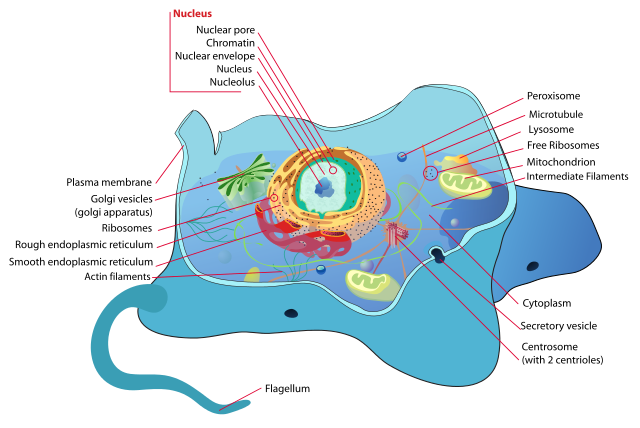Five Crucial Components of the Cell
Living organisms, microscopic or macroscopic, are made up of cells. In fact, the cell is called the fundamental unit of life because every life process required to sustain life occurs inside the cell. The cell is also very resilient, able to adapt to a wide range of environments. For instance, unicellular organisms, as the name suggests, are made up of a single cell and are able to survive and even thrive in extremely hostile environments. Regardless, most of the components found in the cell are common to all living organisms. We shall explore some of the components of the cell in detail.
Nucleus
One of the most important components of the cell is the nucleus. The nucleus is a membrane-bound organelle where the DNA is contained. One of the most important DNA Function is to store information about the cell. This information can then be transferred during cell division. However, only eukaryotes have a nucleus. Prokaryotes have their DNA contained in a tightly packed region called the nucleoid region. This is due to the fact that prokaryotic cells do not possess any membrane-bound organelles.
Ribosomes
Often called the cell’s protein factory, ribosomes are responsible for the synthesis of proteins which are paramount for many cellular processes. They are also tasked with converting the genetic code into an amino acid sequence. Typically, ribosomes are found in the endoplasmic reticulum, where they are embedded in the membrane. Also, ribosomes are found freely floating in the cytoplasm. In a typical mammalian cell, there can be as many as 10 million ribosomes. When a large number of ribosomes become attached to the same mRNA strand, the resultant structure is called a polysome.
Chloroplasts
Chloroplasts are membrane-bound organelles that are found exclusively in organisms that follow the autotrophic mode of nutrition. Hence, chloroplasts are found in green plants and algae. Interestingly, many evolutionary biologists speculated that one of the very first forms of life on earth to have evolved may have been autotrophic organisms – precursors to chloroplasts and their pigments may have enabled autotrophic organisms to synthesize their own energy from inorganic substances. Today, much of the earth’s biodiversity is represented by plants. In other words, the biomass of plants on land is speculated to be around 1000 times that of animals (excluding bacteria).
Endoplasmic Reticulum (ER)
The endoplasmic reticulum is a cell organelle that begins from the nucleus and extends into the surrounding cytoplasm. Structurally, the ER can be classified into two compartments – the ribosome-studded rough ER and the smooth ER. Smooth ER is mainly responsible for the production of lipids, phospholipids, steroids and hormones. The cells that produce these substances have an excess of smooth er – such as the ovaries, testes and oil glands in the skin. Rough ER is tasked with the production of proteins.
Mitochondria
Mitochondria are known as the powerhouse of the cell as it transforms glucose into an energy-dense molecule called ATP (adenosine triphosphate). We now know that smooth endoplasmic reticulum produces a range of substances including lipids. Current research has shown that a subset of those lipids is also produced in the mitochondria.
Explore more about the cell or other fascinating topics by registering with BYJU’S Biology. Alternatively, subscribe to BYJU’S YouTube channel to discover fascinating videos on maths and science!


